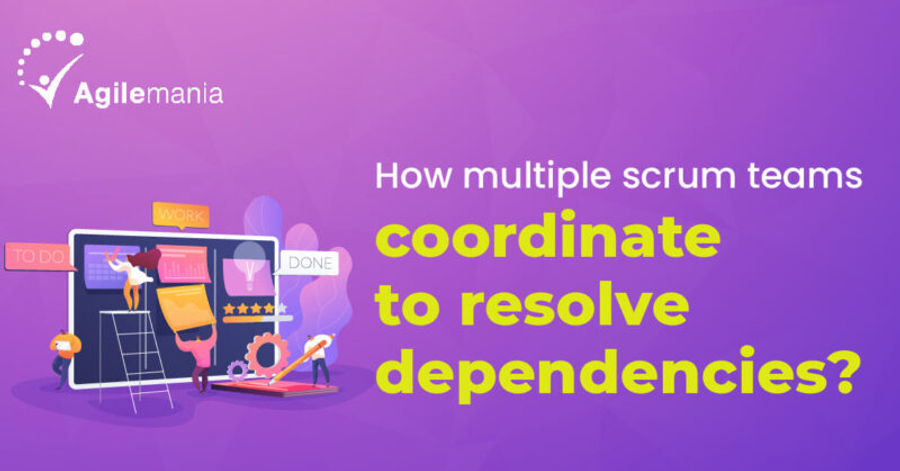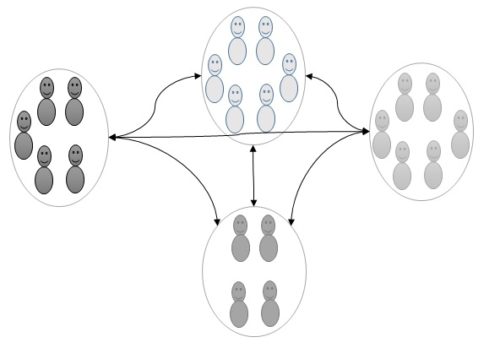CATEGORY LIST
Popular Post
-
![Agilemania Blog]()
Continuous Delivery Pipeline – Sca...
Sep 22nd 2022 - BY Agilemania
-
![Agilemania Blog]()
Sep 29th 2019 - BY
-
![Agilemania Blog]()
Agile Transformation and High-Performance...
Dec 6th 2018 - BY Agilemania
TAGS

- Agilemania
- Nov 1st 2016
Introduction
I presented my experience about LeSS (Large-Scale Scrum) implementation through various conferences this year. Got very good feedback as well. But people were having many questions regarding team coordination so thought of sharing my experience here. See below some of the most frequently asked questions.
- One Product Owner and multiple development team – How is that possible? One PO won’t be available for multiple team at same time. How multiple teams coordinate with single PO?
- One Scrum Master for more than one team – It will not work because SM should be full time to resolve impediment else team may get stuck. How is that possible?
- Development team should resolve dependencies – Isn’t it job of Scrum Master and Scrum Master resolve it through Scrum of Scrums (SOS)?
My experience
2 years back I started working with a captive unit as agile coach and did fairly well within 8 months of engagement. Helped team to adopt LeSS like structure with 120 people. There we encountered similar scenarios about managing dependencies with multiple scrum teams. Yes we went through basic steps. Why there are so many dependencies? How to avoid those by multi-team refinement and planning? How engineering practices like A-TDD and CI can help here? We did lot many experiments to reduce dependencies but still there were dependencies. We accepted the fact that there will be some dependencies so better to figure out ways to address those effectively.What we did?
- Scrum of Scrums (SOS) – Since I was aware about potential misuse of this practice so we named it differently. Our meeting name was chai per charcha (inspired by BJP election campaign - 2014). We were having it for 30 mins every day and open for everyone. Anyone can join but it wasn’t mandatory. Was it successful? Not much. Was it useful? Somehow.
- Walk and talk – Reach-out to your team member and talk. Don’t know whom to reach out? Talk to your peer/SM. This was the best.
- Weekly Informal Session – Scheduled for 2 hours every week on Friday. This was done after hearing complain regarding less visibility of overall product progress. Later on platform to share learning and experiment.
- Let’s enable code to talk – ATDD and continuous Integration practices. Work on mainline and feature toggling.
- Travelers – There were some challenges in regards to skills. To solve those challenges we came up with concept of travelers to manage skills gap.
Find Our Upcoming Trainings

Agilemania
Agilemania, a small group of passionate Lean-Agile-DevOps consultants and trainers, is the most trusted brand for digital transformations in South and South-East Asia.
Sign up for Agilemania Newsletter
Stay updated with the latest Agile & Scrum trends.
CATEGORY LIST
Popular Post
-
![Agilemania Blog]()
Continuous Delivery Pipeline – Sca...
Sep 22nd 2022 - BY Agilemania
-
![Agilemania Blog]()
Sep 29th 2019 - BY
-
![Agilemania Blog]()
Agile Transformation and High-Performance...
Dec 6th 2018 - BY Agilemania
TAGS
Agilemania is a group of passionate Lean-Agile-DevOps consultants and trainers focused on delivering measurable, sustainable results for our clients.
Connect with us on Social Media
Knowledge Area
Agilemania Technologies Private Limited © 2024 All rights reserved.

Provide Below Information!
One of our representative will get back to you shortly.






